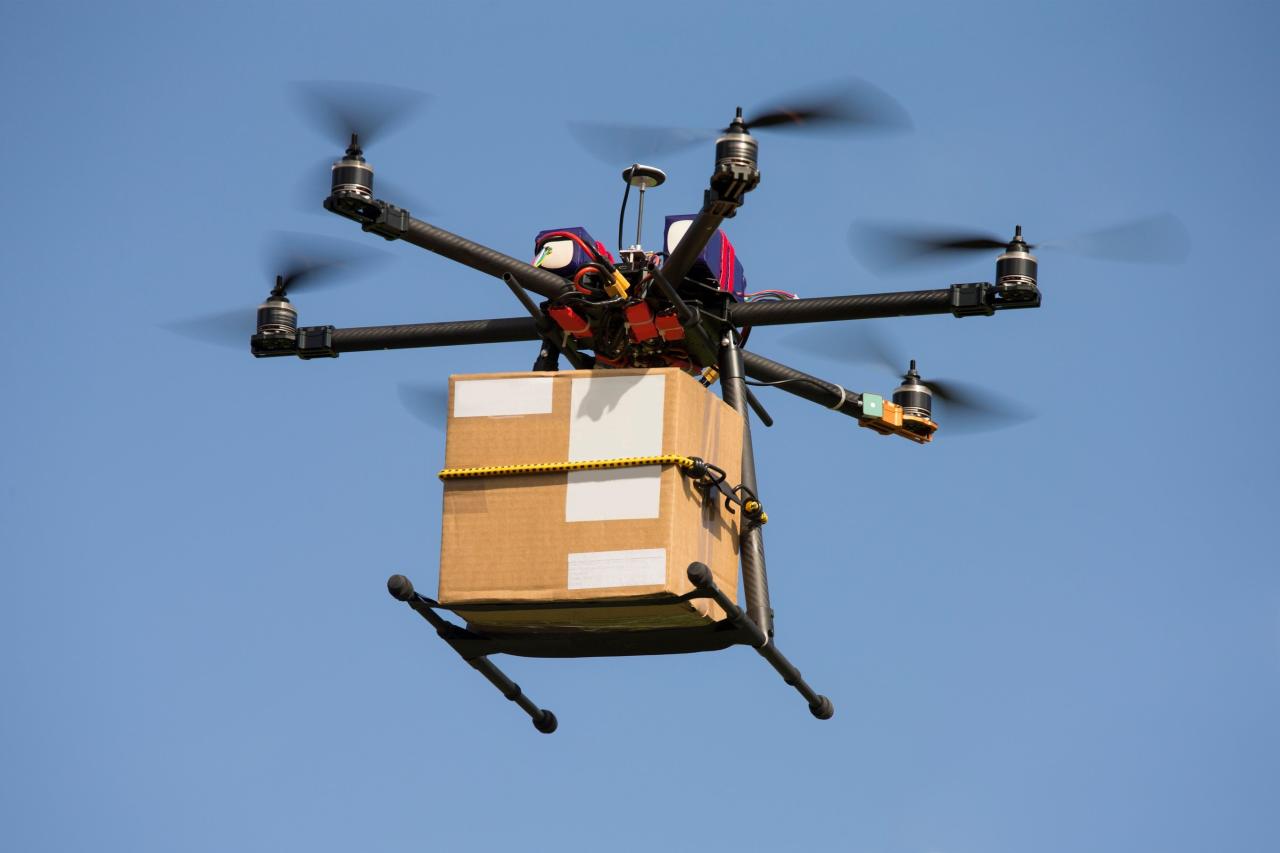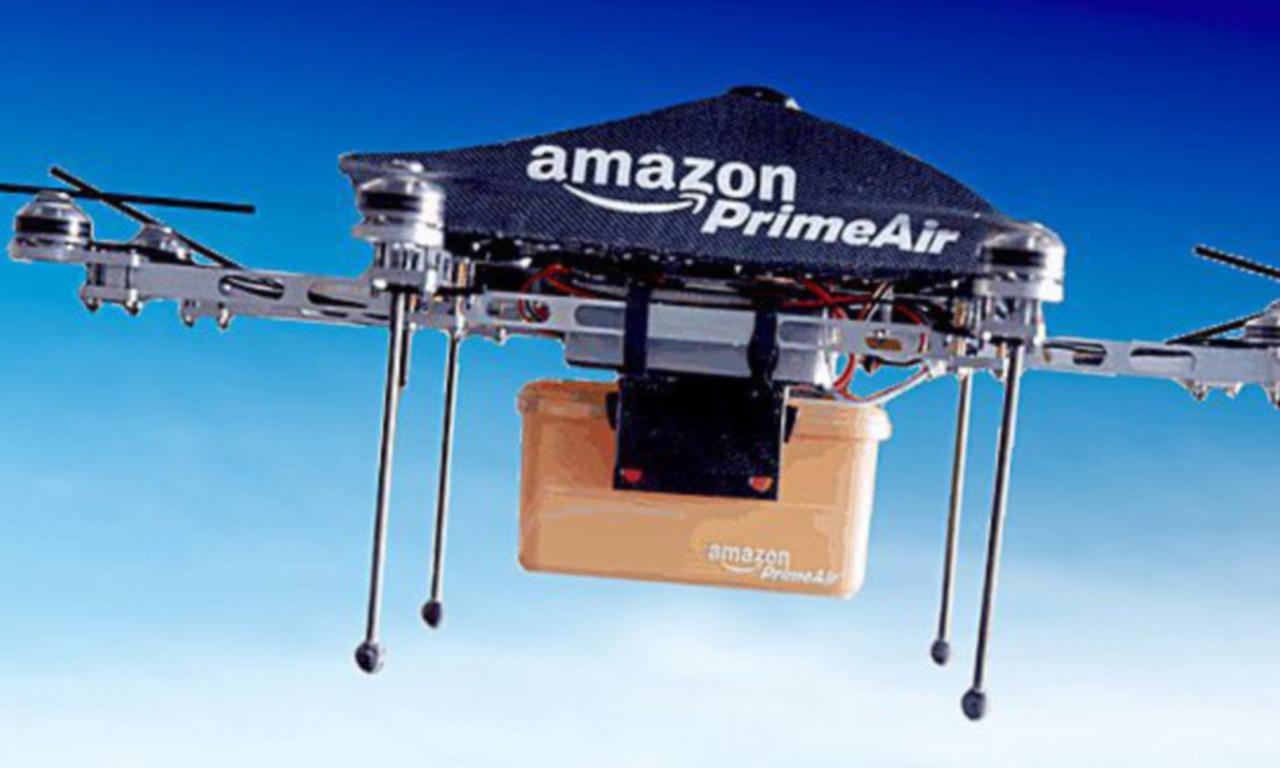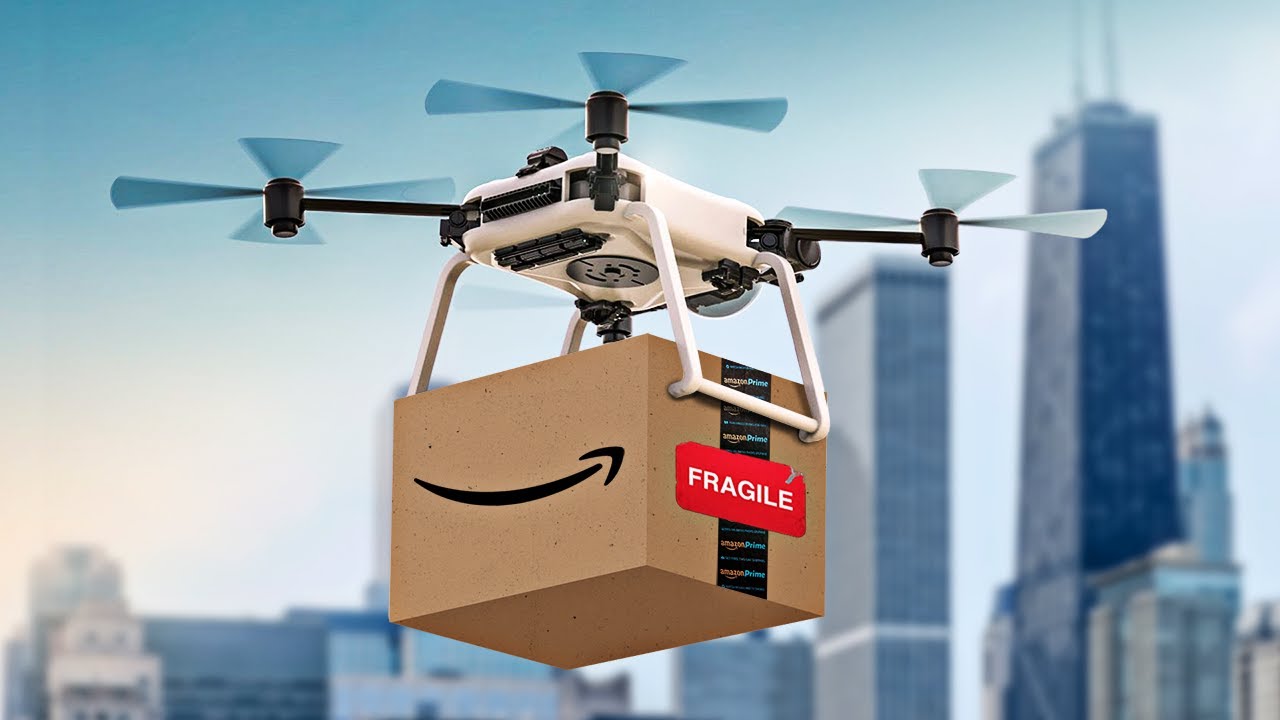Amazon drone delivery locations are rapidly expanding, marking a significant shift in e-commerce logistics. This innovative approach promises faster delivery times and reduced environmental impact, but it also presents unique challenges related to infrastructure, regulations, and technology. This guide explores the current state of Amazon’s drone delivery program, examining its operational scope, technological underpinnings, regulatory hurdles, and future prospects.
We’ll delve into the specifics of where drones currently deliver, the infrastructure required to support this service, and the evolving regulatory landscape shaping its growth.
We’ll cover everything from the types of packages eligible for drone delivery to the safety features built into the drones themselves. Understanding these aspects is crucial to grasping the potential and limitations of this transformative technology. Get ready to take flight into the future of package delivery!
Amazon Drone Delivery Program: A Comprehensive Overview
Amazon’s drone delivery program represents a significant shift in e-commerce logistics, promising faster and more efficient delivery options. This article delves into the current status, infrastructure requirements, regulatory aspects, customer experience, future prospects, and technological underpinnings of this innovative service.
Current Amazon Drone Delivery Program Status

Amazon’s drone delivery service, officially known as Amazon Prime Air, is currently operational in a limited number of locations across the United States. The program’s geographical reach is expanding gradually, but it remains focused on specific areas that meet the necessary infrastructure and regulatory requirements. The types of packages eligible for drone delivery are also carefully selected to ensure safe and efficient operations.
| State | City | Start Date (Approximate) | Number of Deliveries (Estimated) |
|---|---|---|---|
| California | Lockeford | 2022 | Thousands |
| Texas | College Station | 2022 | Thousands |
| Kentucky | Amazon’s testing facility near its headquarters | 2016 | Tens of Thousands (Testing and development) |
| Arkansas | Gravette | 2023 | Hundreds |
Currently, only small, lightweight packages are eligible for drone delivery. These typically include everyday items such as books, electronics accessories, and smaller household goods. Amazon continuously evaluates which product categories are suitable for drone delivery based on weight, size, and fragility.
Key milestones in Amazon’s drone delivery program include:
- 2013: Amazon announces plans for Prime Air drone delivery.
- 2016: Initial test flights and development begin.
- 2020: First customer deliveries completed in Lockeford, California.
- 2022-Present: Expansion to additional locations in Texas and Arkansas.
Infrastructure Requirements for Drone Delivery Locations
Successful drone delivery requires a carefully planned infrastructure to support safe and efficient operations. This infrastructure goes beyond simply having a drone; it necessitates specific landing zones, charging stations, and robust communication networks.
A comparison of infrastructure needs between drone and traditional delivery methods:
- Drone Delivery: Requires designated landing zones, charging stations, robust communication networks (for real-time tracking and control), and potentially maintenance facilities.
- Traditional Delivery: Relies on extensive road networks, delivery vehicles, sorting facilities, and driver networks.
Expanding drone delivery to a new city, like Austin, Texas, would involve:
- Site Selection: Identifying suitable locations for landing zones, considering factors such as population density, proximity to delivery areas, and accessibility for drone takeoff and landing.
- Landing Zone Construction: Creating safe and secure landing zones that are compliant with local regulations and minimize disruption to the surrounding environment.
- Communication Network Deployment: Establishing a reliable communication network to ensure seamless drone control and data transmission.
- Charging Station Setup: Installing charging stations at strategic locations to ensure sufficient power for drone operations throughout the day.
- Regulatory Compliance: Obtaining necessary permits and approvals from local authorities and adhering to all applicable regulations.
Regulatory and Legal Aspects of Drone Delivery Locations, Amazon drone delivery locations
The regulatory landscape for drone delivery is complex and constantly evolving. Amazon must navigate federal, state, and local regulations to ensure its operations are compliant and safe.
Key regulatory challenges and opportunities include:
- FAA Regulations: Compliance with Federal Aviation Administration (FAA) rules regarding airspace usage, drone certification, and pilot licensing is crucial.
- State and Local Laws: Navigating varying state and local regulations related to drone operations, noise pollution, and privacy concerns.
- Data Privacy: Addressing concerns related to data collected by drones and ensuring compliance with privacy regulations.
Amazon actively collaborates with regulatory bodies to shape the future of drone delivery. This includes participating in industry discussions, providing data on safety and operational efficiency, and working with policymakers to create clear and consistent regulations.
Customer Experience and Impact of Drone Delivery
Receiving a package via Amazon drone delivery offers a unique customer experience.
- Speed and Convenience: Faster delivery times compared to traditional methods.
- Tracking and Notifications: Real-time tracking and notifications throughout the delivery process.
- Quiet and Discreet Delivery: Less noise pollution compared to traditional delivery vehicles.
A comparison of drone and traditional delivery methods in terms of speed and efficiency:
- Drone delivery generally offers faster delivery times for eligible packages within a limited range.
- Traditional delivery methods are more versatile and can reach a wider range of locations.
Environmental impact comparison:
| Environmental Factor | Comparison |
|---|---|
| Carbon Emissions | Drone delivery has the potential for lower carbon emissions per delivery compared to traditional methods, particularly for shorter distances, depending on the drone’s power source and operational efficiency. |
| Noise Pollution | Drone delivery generally produces less noise pollution than traditional delivery vehicles. |
| Land Use | Drone delivery requires dedicated landing zones, potentially impacting land use in some areas. |
Future Prospects and Expansion Plans for Drone Delivery

Amazon’s plans for expanding drone delivery include increasing its geographical reach to more cities and towns, and expanding the types of packages eligible for delivery. The company envisions drone delivery becoming an integral part of its logistics network, complementing existing delivery methods.
The future role of drone delivery in e-commerce will likely see increased adoption as technology improves and regulations evolve. We can expect to see drones used for a wider variety of delivery needs, including same-day and even on-demand delivery options.
Potential future challenges for Amazon’s drone delivery program include:
- Technological advancements in competing technologies. The rapid pace of technological innovation might lead to alternative delivery methods becoming more cost-effective or efficient.
- Maintaining public trust and addressing safety concerns. Continued efforts are needed to build public confidence in the safety and reliability of drone delivery.
- Regulatory hurdles and evolving policies. The regulatory landscape is ever-changing, requiring constant adaptation and compliance.
Technological Aspects of Amazon Drone Delivery

Amazon’s drones utilize advanced technology to ensure safe and efficient delivery. These technologies include sophisticated navigation systems, obstacle avoidance capabilities, and precise package handling mechanisms.
Safety features incorporated into Amazon’s drones and delivery system include:
- Redundant systems: Multiple sensors and systems are used to ensure safe operation, even in the event of component failure.
- Obstacle avoidance: Advanced sensors and algorithms allow drones to detect and avoid obstacles during flight.
- Fail-safe mechanisms: Emergency landing procedures and safety protocols are in place to mitigate risks.
Imagine an Amazon delivery drone in flight: A sleek, hexacopter design, with six rotors providing stability and maneuverability. Multiple cameras and sensors are integrated into the body, providing 360-degree vision and enabling autonomous navigation. The underside features a secure compartment for the package, which is gently lowered to the designated delivery location using a cable system. The drone itself is relatively quiet, emitting only a low hum during operation.
Small LED lights are visible, indicating the drone’s status and flight path.
Final Conclusion: Amazon Drone Delivery Locations
Amazon’s drone delivery program represents a bold step towards a faster, more efficient, and potentially more sustainable future for e-commerce. While challenges remain in terms of regulatory hurdles and technological advancements, the ongoing expansion and innovation suggest a significant role for drone delivery in reshaping the logistics landscape. As Amazon continues to refine its technology and expand its operational reach, we can expect to see even more seamless and widespread drone deliveries in the years to come.
So you’re curious about where Amazon’s drone deliveries are headed? It’s all about finding the right infrastructure, and that means looking at areas with good airspace management. Think about the precision needed – it’s similar to the amazing choreography of the Niagara Falls drone show , but instead of dazzling light displays, it’s packages arriving safely. Ultimately, Amazon’s drone delivery locations will depend on successful integration with existing air traffic systems and suitable residential areas.
The convenience and speed offered by this service are likely to transform customer expectations and further drive the adoption of drone technology across various industries.
So, Amazon’s expanding its drone delivery locations, aiming for wider coverage. It makes you think about the safety aspects, though, especially after seeing what happened at that recent drone show accident ; it highlights the importance of robust safety protocols for all drone operations, including those delivering packages. Ultimately, safe and reliable drone delivery hinges on careful planning and rigorous testing in all Amazon’s chosen locations.
FAQ Overview
What is the weight limit for Amazon drone deliveries?
The weight limit varies depending on the drone model and package dimensions, but generally, it’s limited to smaller, lighter packages.
How much does Amazon drone delivery cost?
Amazon’s expanding drone delivery network is aiming for more locations, but safety is key. Recent incidents highlight the importance of robust systems; for example, check out this report on a drone crash in Paris to see what can go wrong. Understanding these challenges helps Amazon refine its drone delivery locations and procedures to ensure reliable and safe service.
Currently, drone delivery is often integrated into existing Prime services and doesn’t typically incur an additional fee, but this might change.
What happens if a drone encounters bad weather?
Amazon drones are equipped with sensors and systems to detect and avoid bad weather conditions. Deliveries are usually delayed or rerouted in such cases.
Are there any restrictions on what can be delivered by drone?
Yes, certain items like hazardous materials, perishable goods requiring temperature control, and oversized packages are generally not eligible for drone delivery.
